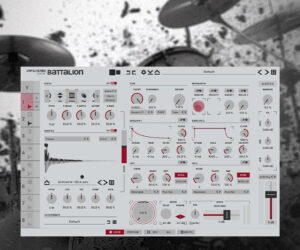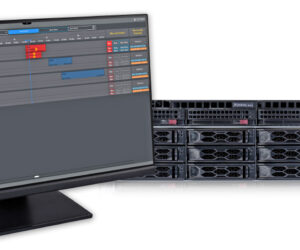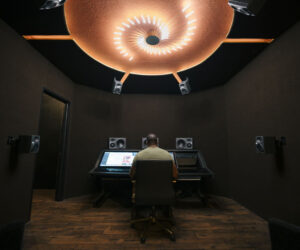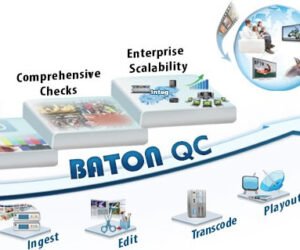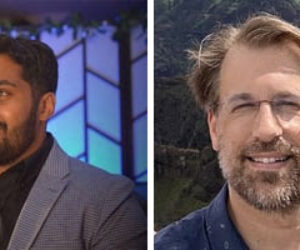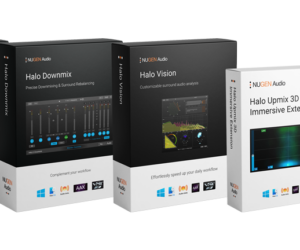Pieter Schlosser’s career should serve as more than enough inspiration for current students of his alma mater, the storied Berklee College of Music. His film and TV credits include Agents of S.H.I.E.L.D.; You, Me, and the Apocalypse; Desperate Housewives; the Transformers franchise, and many more.
Most recently, he contributed droves of cues and themes to the score for Destiny 2, a console/PC game whose save-the-world narrative spans an ambitiously huge and detailed sci-fi universe. Musically, the center of his own universe is Steinberg Cubase Pro, and he offers a look into how it integrates with his creative workflow.
“I’ve been using Cubase for about 12 years now,” says Schlosser. “I’ve tried all the DAWs. I always go back to Cubase because it just works for me better than anything else.”
An interactive experience where events can turn on a dime is a different animal than movies and TV shows with their linear scripts: The music must respond to real-time changes as nimbly as an expert gamer. “One thing that was incredibly handy for this was how easily Cubase exports assets,” explains Schlosser. “I mean, you have to write cues in a linear fashion — from point A to point B, A to F, whatever it is. But we have to deliver that content in a way where we need to grab different sections and snippets from this big, linear arrangement with 200 or more tracks in it. Eventually, we also have to separate everything out as audio stems, which is the delivery format that [game developer] Bungie wants.
“Coming from a technical background of audio engineering as well as composing, I can vouch that the way Cubase handles this task blends really well into a game music workflow,” Schlosser continues.“If I set up my template in the beginning so that I’m on top of all my audio routing and all my labeling, I can tap a couple of keys and print all the assets to audio very easily.”
Searching and navigation should be as painless, particularly with high track counts, and Schlosser gives Cubase high marks in this regard. “The search functions are just as easy and accurate as the exporting. One thing I especially love is the Overview Line, where I can click and zoom to different parts of the session. When editing, I can click a note and Cubase can take me straight to the associated track. In general, finding things is super easy, which is important when you’re on a tight deadline.”
Schlosser describes the score of Destiny 2 as “hybrid orchestral,” meaning that big-Hollywood brass and bow swells are supported by synthesizer sounds as the mood and moment demand. “We tried to conceive of the synths as being a section of the orchestra,” he explains,“just like the strings or the brass or the woodwinds.” For this purpose, he found some of the virtual instruments bundled with Cubase Pro to be quite useful.
“I used HALion Sonic a lot. There are some really interesting sounds in there,” he notes. “I would find sort of a regular stock patch, whatever it might be, and start to process and mangle it. I use a lot of the stock effects settings as well. There’s also Groove Agent, which I’d use for rhythmic inspiration. I used Padshop all the time because it has so many patches that evolve and move.For a lot of the ambiance and creepy things, Padshop was a real gift. It was so easy to just pull up a patch, maybe tweak a couple of settings, and be saying, ‘Is that it? That was too easy.’ It felt like cheating.”
Audio plugins native to Cubase got no less of a workout. “Two of my go-tos are the REVerence convolution reverb and REVelation rhythmic reverb,” says Schlosser.“I use the Viennese Hall preset from REVerence all the time. The QuadraFuzz distortion is cool to make percussion elements more aggressive. I also find myself using a lot of the stock dynamic processors, especially the Tube Compressor and Brickwall Limiter. There are parts of the game where the percussion gets sort of metallic sounding, so it’s okay to go almost to that sort of square-wave clipping but without crossing the line. Again, I can press about three buttons and be right there. Maybe the most important thing, though, is that all these plugins are VST3, so they don’t use any processing power when active audio is not running through them. When you have 100 or 200 tracks in a project, that can make a difference.”
The hybrid philosophy led to recording orchestras and choirs in such top studios as Ocean Way Nashville and Skywalker Sound because, as Schlosser says, “Whenever possible, we wanted to replace sampled instruments from our mockups with the real thing. Then, we’d bring the orchestra tracks back into Cubase.” Here, the VariAudio feature, which can alter the pitch and timing of individual notes within a monophonic audio track, proved indispensable.
“You have to be a stickler about timing because everything has to sync up with the gameplay at every instant,” cautions Schlosser. “So, it’s really cool to get in there and massage anything that’s a bit off. Sometimes that happens with some of the string parts driving a scene because there’s such a rhythmic element underneath them. I put the track in VariAudio and Cubase analyzes it right away. I can then quantize the audio to the grid with no audible artifacts. It’s another one of those things that’s so easy it feels like cheating.”
Comping — editing the best bits of several takes together into an optimal performance — is a frequent task in music production. Cubase has two levels of editing that aid comping, as Schlosser details: “I use both a lot when I’m writing cues — what they call TrackVersions for getting down alternate versions of the same track. Then I use the Lanes, which are sort of tracks-within-a-track, for assembling bits of audio and MIDI together. I recorded a cellist awhile ago, and if we said, ‘Okay, let’s do it again,’ I could quickly get right back to the bar where we started. You can do several takes withoutinterruption. Then, comping it together goes just as smoothly.”
Tools that facilitate remote collaboration were also important, as Schlosser is one of five composers credited on Destiny 2. “Skye Lewin, C. Paul Johnson, Rotem Moav, and I all went to Berklee,” he recalls. “Then we have Mike Salvatori, who’s been at Bungie since the early days of Halo. Everybody’s setup is a little different, of course, and Rotem is also on Cubase — I’m trying to convince the other guys to switch.
“The point is, with five people working in different places, your levels need to be consistent,” he elaborates. “The Loudness Meter in Cubase puts so much precise information in your face, right there in the Control Room view. You have the momentary maximum, the short term that measures about three seconds, the integrated average level over a defined time period, overall dynamic range, and the true peak. This lets me ensure that whatever I’m thinking of in musical terms assoft, loud, or anything in between matches what the other guys are thinking — by the numbers.”
As to sound quality, Schlosser reflects, “There are a lot of variables such as the audio interface or converters you’re using, but I’ve heard from many engineers and composers that they prefer the Cubase mix engine over other DAWs. I haven’t done a critical comparison, but subjectively, Cubase gives me a great sense of soundstage and imaging; there’s a feeling that there’s plenty of ‘space’ in which to mix.”
What’s next for Pieter Schlosser? “I’m working on a new TV show called Light as a Feather, which will be on Hulu around October. I just finished a documentary that’s in IMAX theatres now, Saturn’s Rings. I’m also doing music for this art group that does large-scale laser projection on buildings to make it look like, say, the building is falling down or flowers are growing out of the wall. We’re doing an installationat an ancient Mayan pyramid in Mexico.”
For this and any project where he might compose on the road, Schlosser notes, “I just built a mobile Cubase rig and got one of the new Steinberg UR-RT4 interfaces, which has the Rupert Neve transformers. It’s really well built. It sounds great and is very simple. It’s quite Germanic in that sense of ‘everything you need and nothing you don’t.’ And I want to mention the Dorico notation program. I didn’t use it on Destiny 2 but I’m jonesing for it to take over.”
Whatever he works on and wherever he does it, Schlosser sums up his affinity for Cubase in terms of what it doesn’t do: “When I’m working I don’t think, ‘Hey, I’m using this piece of software called Cubase.’ Mostly I think about writing music. It’s a really transparent tool that gets out of my way, and I love that.”








